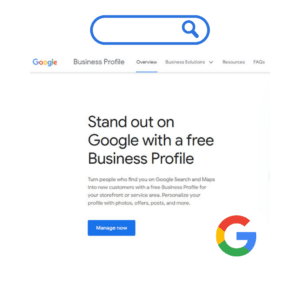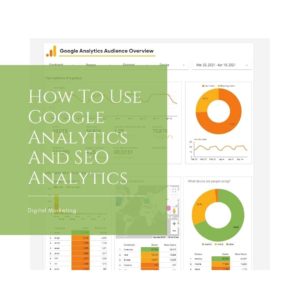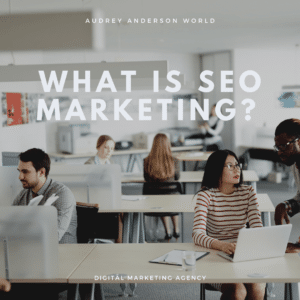
Google Stories – The Ultimate Guide
In October, Google created a home for Web Stories in Google Discover The Ultimate Guide to Using Google Stories for Content Creators A home for Web Stories in Google Discover
What is Search Engine Optimization? The Beginner’s Guide to Keyword Research and SEO Content Strategy


Search Engine Optimisation or, in a nutshell, SEO Content Strategy, which improves the volume and the degree of visitors to your website
traffic to your website through organic search engine results (Google, Yahoo, Bing, Etc).

Search Engine Optimisation is the practice of making your website appear higher in search results than your competitors by optimising it with keywords. SEO for a local business The definition of SEO has changed and evolved since its inception.
The core of SEO is keywords, which is the keyword-based advertising concept you should never write off. Depending on your website’s domain name, the best possible keywords for the domain name will be in a very narrow range of popular search terms. The notion that keywords need to be long-tail, unique, and specific, like these seven words, is mostly irrelevant today.
The phrase “three-word product description” also falls under the category of long-tail, long-tail keywords.
Search engine optimisation, or SEO, is all about optimising your website for search engines, specifically Google. While most people use search engines to find information online, search engines also search online to help people find websites they want to visit, like your own.
It is for this reason that Google gets a lot of your website traffic. Because of this, Google determines how you rank online. And this is what determines the rankings of businesses like yours, allowing you to be on top of the search engines’ search results, too. What factors influence SEO?
SEO stands for Search Engine Optimisation, and it refers to the practice of increasing the volume and calibre of traffic to your website through organic search engine results.
Consider a search engine to be a website where you can now more than ever use “Voice Search” to ask a question, and Google, Yahoo or Bing will give you the answer you want with a long list of websites.
That is correct. But have you ever considered what’s behind those enchanted lists of links?
This is how it works: Google (or whatever search engine you’re using) has a crawler that goes out and collects data on all the content they can find on the Internet. Crawlers send all of those 1s and 0s back to the search engine, which uses them to create an index. This index is then fed into an algorithm, which attempts to match all of the data with your query.
Numerous factors go into a search engine’s algorithm, and a group of experts ranked their importance as follows:
That’s all there is to SEO’s SE (search engine).
The optimisation part of SEO is an important part of my SEO Content Strategy and put it on my blog. This is assisting search engines to clearly understand what they’re viewing, and users who arrive via search will like what they see.
Optimisation can take many different forms. It includes everything from ensuring that your title tags and meta descriptions are informative and the appropriate length to direct internal links to pages you’re proud of.
Let’s break down that definition and look at the parts to understand the true meaning of SEO:
Traffic quality. You can bring in all the visitors in the world, but if they come looking for anything other than what you are selling. In my opinion, this is not the quality of traffic you are looking for. We all want to attract visitors interested in my case – Digital Marketing Agency, Social Media Strategy, Website Building, Personal Branding, Emerging or Growth Markets or the Beauty Industry.
The volume of traffic. More traffic is better once you have the right people clicking through those search engine results pages (SERPs).
Natural outcomes. Ads occupy a sizable portion of many SERPs. Organic traffic is defined as any traffic that does not require payment.
Organic search traffic is defined as any unpaid traffic derived from SERPs.
Here’s a high-level overview: We know that many factors influence the popularity of your website, what your services or products are, how much you are charging for your products and services, and then how many people are visiting your website for this information.
The main factor influencing how effective your website is in boosting traffic is its organic rank on the search engines. If your website is on the first page of the search results, it means that Google is confident that your website provides useful and relevant information, with a strong SEO content strategy and your services.
Google takes its rankings seriously. Some other factors that influence SEO are the number of backlinks your website has (the best kind of backlinks is relevant backlinks). If your website is getting relevant backlinks and there is no spam or fraud, your website is of great authority.

Free Consultation – SEO , Local Google My Business Digital Marketing
So you are here as you want to start your SEO journey; it’s time to implement those SEO techniques to your site, whether it’s brand new or an old one that needs to be updated.
SEO Content Strategy and related Terms
A website isn’t really a website until it has content. However, SEO for content Strategy has so many unique variables that we’ve separated it into its own section. If you’re interested in keyword research, how to write SEO-friendly copy, and the type of markup that helps search engines understand what your content is about, start here.
By delving into SEO content strategy and related markup, you’ve already learned a lot about on-site topics. Next, it’s time to get technical with some robots.txt information.
Explore everything there is to know about links, from anchor text to redirection. Read this series of pages to learn how and when to use “nofollow”, as well as whether guest blogging is truly dead. If you’re more interested in link building (working to improve your site’s rankings by earning links), skip ahead to the Beginner’s Guide to Link Building.
Thank you very much! You’ve mastered the fundamentals of daily SEO and are now ready to move on to more advanced topics. First, ensure that traffic converts as easily as possible with conversion rate optimisation (CRO), then go micro with local SEO or global with international SEO.
Search engine algorithms change frequently, and SEO tactics adapt in response. If you receive SEO advice that doesn’t feel quite right, double-check the relevant topic page.
My starting point is to search for Keywords Related to my Industry or Niche
Understanding your market and search habits are essential for using keywords in your content and/or product strategy. Search terms that will help you find the information you’re looking for
You will also learn how to avoid keyword pitfalls and achieve success through good content creation. Once you understand what your target audience is looking for, you will have a lot of new SEO!
To assist a business’s success through search engine optimisation, I first understood who my customers are and what they want. While keyword research takes time, some people skip it because they already know what keywords they want to rank.
The answer is that your search customers’ needs and desires vary greatly. It will be more effective to target your audience and use keyword data.
Angela’s Eyebrow Spa (a Spa in Japan Tokyo) is looking for ways to improve its online presence. You must first understand your customers to make things easier for them. to see if that
Finally, how can you assist in providing the best content strategy to meet what everyone is looking for? These questions will help you with your keyword research and writing skills.
What exactly do your customers want to know?
You can explain what you do, but how will your readers find your product, service, or information? Answering this question is the first step on your journey to Keyword Investigation.
You have a few keywords in mind for which you want to rank. These will be products or services and sections of your website that can be used as research keywords! Keyword research can help you find average monthly search volume and other keywords. We will discuss the keyword search volume in the following section, but it is useful to know which keywords searchers prefer during the discovery process.
When you start researching your keywords in a keyword research tool, you’ll discover new keywords, questions, and content ideas that you wouldn’t have discovered otherwise.
As an example, consider a business that specialises in beauty.
If you search for “beauty” and “skincare,” you will find highly relevant and frequently searched for terms such as “
When you’re creating relevant SEO content strategy with a free app called Ubersuggest, you’ll probably notice that the search volume is low. In some cases, using terms with lower search volume targeting is preferable because they are less well-known.
Search Engine Optimisation is more than being #1 for your product on the page for your primary keywords. Search Engine Optimisation includes everything that has to do with a business’s online presence and that it is working, from brand building to keyword research and content strategy.
Ranking For Local SEO Content Optimisation is about making your business more visible in local and natural results. These three pillars of effective local search creating lots of creative and technical tactics, are employed to convince the search engines that a nearby business is a top result.
Making a connection with nearby customers is one of the most actionable ways to integrate local SEO. Local SEO is all online and offline efforts to promote businesses to become household names in the regions they serve.
SEO works like this: go from point A to point B. The trail has many obstacles but offers many rewards!
Nearly all local businesses should strive to have a presence online. Website optimisation, local business listings, and local reviews are all aimed at increasing online engagement.
Google is the centre of most of the talk on local SEO.
According to mid-2020, Google’s market share was 92.06%. While Bing and Yahoo still have large roles to play, their market share is tiny compared to the 2 trillion Google searches per year.
Google’s 2018 representative stated that 46% of searches have a local intent that is a huge number of local searches performed every day: this illustrates how much prominence in Google’s local and organic search results can benefit the area
Ranking For Local SEO is about making your business more visible in local and natural results. These three pillars of effective local search creating lots of creative and technical tactics, are employed to convince the search engines that a nearby business is a top result.
Making a connection with nearby customers is one of the most actionable ways to integrate local SEO.
SEO works like this: go from point A to point B. The trail has many obstacles but offers many rewards!
Nearly all local businesses should strive to have a presence online. Website optimisation, local business listings, and local reviews are all aimed at increasing online engagement.
Google is the centre of most of the talk on local SEO. That’s odd.
According to mid-2020, Google’s market share was 92.06%. While Bing and Yahoo still have a large role to play, their market share is tiny compared to the 2 trillion Google searches per year.
Google’s 2018 representative stated that 46% of searches have a local intent that is a huge number of local searches performed every day: this illustrates how much prominence in Google’s local and organic search results can benefit the area
Before starting your audit and strategy for a local SEO project, you must make sure you have four key factors in place.
Google’s policies govern Google’s technologies.
How you think about and market a local business online will be heavily influenced by Google’s local search approach. These guidelines for Representing my Business on Google govern what I could and cannot do. I took the time to understand them before I got started.
The Google Guidelines for Representing Your Business is a must-have document for any local business marketer. I needed to reframe my thinking in Google Terms and through its Business Platforms. This avoids timely mistakes and errors.
Violations of the guidelines may result in the loss of rankings, various levels of penalty, and even the removal of local business listings. Bookmark the guidelines, study the rules within them, and return to them frequently because Google frequently adds new provisions and clarifications.
The most important guidelines to understand at the start of your journey are those describing eligibility for inclusion in Google My Business. This requirement must be met by any location:
“A business must make in-person contact with customers during its stated hours to qualify for a Google Business Profile.”
In other words, if a business location does not serve customers face-to-face during its open hours, it is ineligible for a GMB listing and cannot run a full local search marketing campaign. Local SEO is dependent on in-person service, whether it is provided in a store, kerbside, or at the customer’s location.
After determining the eligibility of any location you intend to market, the guidelines go on to describe in great detail how to fill out the various fields of the Google My Business profile, such as how to name a business, how to handle its addresses, departments, and forward-facing practitioners, how to set hours, and more.
Audit basic business information with key people at each location. Double checking that your Business Name, Location, phone number, hours, and other information for each location. Ascertain that all relevant business departments are in complete agreement about the canonical state of this data. Inconsistencies can wreak havoc on a local search marketing campaign from beginning to end.
Skipping this step will land you in hot water later. Make a copy of this simple, free spreadsheet, assign a store number/code to each of the company’s locations, and fill out all of the fields. If the brand you’re promoting qualifies for multi-department or multi-practitioner listings according to Google’s guidelines for representing your business, make sure to include a column for each of these entities.
If you require more fields, add them to the spreadsheet. Consider adding fields for franchisee contact information, for example, if the business is a franchise, so you can quickly reach out to them when you need to communicate.
Finally, if the company has 10 or more locations, you will use Google’s bulk upload functionality, dependent on filling out their bulk upload spreadsheet.
Please take extra care to identify your business model in particular. Among the business models are:
These business models have their individual set of conditions and opportunities for representing your company on Google. We won’t reproduce the entire document in this guide because it is subject to frequent editorial changes — take the time to read the entire set of guidelines to ensure you know how to navigate Google’s online terrain.
In some cases, your project will entail creating the full range of online (and possibly offline) assets for a local business location. Everything from the website to local business listings, email marketing, social media profiles, and review management will be under your control. At times, you may only be looking at a small portion of the picture. However, whether the scope of the work ahead of you is broad or narrow, setting goals from the start is the only way to know whether you succeeded or failed after completing your tasks.
It is usually best if the business owner can state their objectives by answering the question: Try to answer that question with something along the lines of success looking like:
Avoiding answering this question with consideration to vanity metrics such as “I want to be number one” or “I just need more website traffic.” At the end of the day, most businesses want to increase their profits.
Getting from point A to point B is where strategy comes in, defining which tactics and messaging are likely to result in the stated goal, which then translates into increased profits.
Set a timeline after any relevant contributors have agreed on a goal. When it comes to developing a realistic timeline, both in-house and third-party offsite digital marketing agencies. It takes time for the effects of nearly all local search marketing efforts to fully mature, so make sure any timeline you provide does not over-promise and under-deliver.
I know that you want to get started your local SEO journey now that you have the canonical business data, understand the business model and goals, and are well-versed in Google’s guidelines.
My definition: SEO is all about providing content that will attract a targeted audience and provide real value. What factors influence SEO? Let’s break down the key factors: Quality of Content – This is the foundation for SEO.
When you create a blog, you can reach a broader range of search queries. For example, if a person searches, “How does blogging benefit SEO,” the search results will primarily generate blogs.
Blogging works well for generating more diverse search results that your website cannot.
If you want to rank for specific keywords, such as “benefits of blogging,” the best way to do so is to create a blog around that topic. People who search for that keyword search for information because they are unsure how blogging can benefit them.
However, blogging has the advantage of attracting people who are looking for information and then converting them into leads by offering unique offers such as a free SEO website audit.
A website’s credibility and trustworthiness are important to search engines. They want to provide reliable information to website visitors, and one way they can do so is by looking at how many indexed pages a website has.
Having a larger website generally correlates with being a better source of information. However, search engines recognise that this is not always the case, so smaller sites can outrank larger ones.
With a consistent blogging strategy, you can work to index more pages over time.
Businesses use various strategies to build backlinks to write a better blog on a topic that others have blogged about and then do link outreach to people who have linked to their content.
Internal linking’s entire premise is to aid website navigation, establish hierarchy and spread link juice. Without blogging, it is much more difficult to implement an effective internal linking strategy.
It will be difficult to link internally when you first begin developing your content strategy. However, you can develop an internal linking strategy that optimises your website for search over time.
Google values content that is current, relevant, and useful. By consistently blogging, you can provide search engines with new content regularly.
User experience is an important aspect of SEO, and it will continue to play a larger role in where your website ranks.
Benefits Blogging For Indirect SEO
When you blog, you are educating potential customers on a specific subject.
You are establishing yourself as an expert in your field as you continue to blog. Because search engines can see that your content is useful to others, they will have more trust and familiarity with it.
Every blog post represents a new opportunity. It’s an opportunity to bring in new visitors, target specific keywords, and provide content that your audience will enjoy. I employed a great deal of time considering the type of content and making sure it is valuable and part of your SEO content strategy; they will more likely return to your website.
In business, it is uncommon to have the opportunity to address a potential customer’s concerns and questions before speaking with them. You’re doing exactly that by creating a blog and responding to potential customers’ questions.
This is a good way to increase not only sales but also user engagement statistics.
When your blogging and social media strategies are in sync, it becomes easier to engage with your followers and build relationships. I have noticed that I am getting more engagement with my followers and interacting with my brand.
Every time you can get more people to visit your website, you’re adding another point of contact with your brand. It raises brand awareness and encourages repeat visitors.
Popular blogs also have a long life cycle, making it easy to attract visitors from organic search for several years.
Keywords Organic search engine results And lastly, since these four parts are interrelated, we’ll throw that in as well:
Keyword research is at the heart of SEO, but it is no longer the first step towards achieving organic growth. Instead, the first step is to create a list of topics you want your content to cover.
First, make a list of about ten words and terms associated with your product or service. Use an SEO tool (for example, Google’s Keyword Tool, Ahrefs, SEMRush, or GrowthBar) to research these words, determine their search volume, and develop variations relevant to your industry.
Associating these blog topics with popular short-tail keywords, but you do not dedicate individual blog posts to these keywords.
You’ll start optimising your pages for specific keywords in this step. Using your keyword tool, identify five to ten long-tail keywords that delve deeper into the original topic keyword for each pillar you’ve identified.
For example, we frequently create SEO content, but it isn’t easy to rank well on Google for such a popular topic with just this acronym. We also run the risk of competing with our own content if we create multiple pages that target the same keyword — and potentially the same SERPs. As a result, we also create content on conducting keyword research, optimising images for search engines, developing an SEO strategy (which you’re reading right now), and other SEO subtopics.
This helps you and your businesses attract people with diverse interests and concerns — and, as a result, this creates more entry points for people interested in what you have to offer.
Create blog posts or web pages using your long-tail keywords to explain the specific topics within the pillars you’ve chosen. All of your long-tail keywords work together to form a cluster around a pillar topic. Search engine algorithms rely on cluster relationships to connect users with the information they seek.
This provides a high-level overview of the topic by utilising the long-tail keywords you generated for each cluster in step two. These pillar pages can essentially serve as a table of contents, with a description of the main topic and briefing readers on subtopics covered in subsequent posts.
Finally, the number of topics you create pillar pages should correspond to your business needs, such as the number of products and services you offer. This makes it much easier for prospects and customers to find you in search engines, regardless of the keywords they use.
I have learned that not every blog post or web page I have created does not have to be part of a topic cluster. Writing about tangential topics that your customers care about can also help you gain authority with Google’s algorithms.
With that in mind, commit to blogging at least once a week. Remember that your blog is for your readers, not search engines; research your target market and write about topics they are interested in.
It may be beneficial to develop a content strategy to remain consistent and focused on your goals.
After this, I really hope that you can better understand the key components that influence the SERPs. SEO Content Strategy The goal of SEO is to rank on the SERPs, and with that, traffic. To rank on the SERPs and to get traffic, the content strategy is pivotal.
The following tips show you the direction to take if you want to be more successful with SEO. Keyword Research After coming up with a clear mission, it’s time to focus your efforts on keyword research. With keywords, you need to match them with your site or website goals. To do this, you need to conduct keyword research by creating a content strategy aligned with your site and needs.
It’s always best to start your keyword research with Google, the industry leader.
Lastly, Keep up with the latest SEO news and best practices.
The search engine landscape, like marketing, is constantly changing. I personally find that I daily read the news or articles to help me keep up with current trends and best practices is an important strategy, and there are numerous online resources to assist you. Here are a few resources to consider:
Search Engine Land Diggity Marketing This Blog! Moz SEOBook Search Engine Roundtable Search Engine Land Diggity Marketing This Blog!
Get updated with the latest news about our company’s achievements and activities

In October, Google created a home for Web Stories in Google Discover The Ultimate Guide to Using Google Stories for Content Creators A home for Web Stories in Google Discover

SEO – Keyword Clusters Your Complete Guide to Keyword Clusters for SEO The importance of keyword clusters is their ability to increase organic traffic is underestimated and often overlooked. This

A Guide to Search Engine Marketing + SEM Strategy: The Basics and Beyond A Guide to Search Engine Marketing Search engine marketing (SEM) is a marketing strategy that involves putting

Business Marketing Strategy – Google Business Profile The Complete Guide to Optimising Your Google My Business Page How to Use Google Business Profile to Increase Sales and attract local prospective

How To Use Google Analytics And SEO Analytics For Beginners How To Use Google Analytics For Beginners How To Use Google Analytics For Beginners – The Importance of SEO Analytics

How to turn into a Customer Magnet?-And How Do I Reduce Customer Acquisition Costs using SEO? More importantly, what is SEO Marketing?
You are here because you want to learn how to bring your customers to you and build your profile on the growing number of social media platforms out there. I want to start with the foundation or the basic principle that you need to start with, and that’s your WEBSITE.
